Abstract
The effects on cardiovascular changes during induction of anaesthesia and intubation of routine premedication with three different anticholinergic drugs, atropine, hyoscine, and glycopyrronium, were compared in a double blind trial. Administration of both atropine and hyoscine, whether intramuscularly or orally, was found to be associated with a high incidence of dysrhythmias. With glycopyrronium the incidence was much lower, but control patients receiving no anticholinergic premedication had no dysrhythmias. The heart rates and blood pressures were similar in all the groups during intubation and cuff inflation. A single dose of suxamethonium was not associated with any bradycardia. The need for routine anticholinergic drug administration should be reconsidered. However, if necessary, glycopyrronium appears to have an obvious advantage over atropine and hyoscine.
Full text
PDF
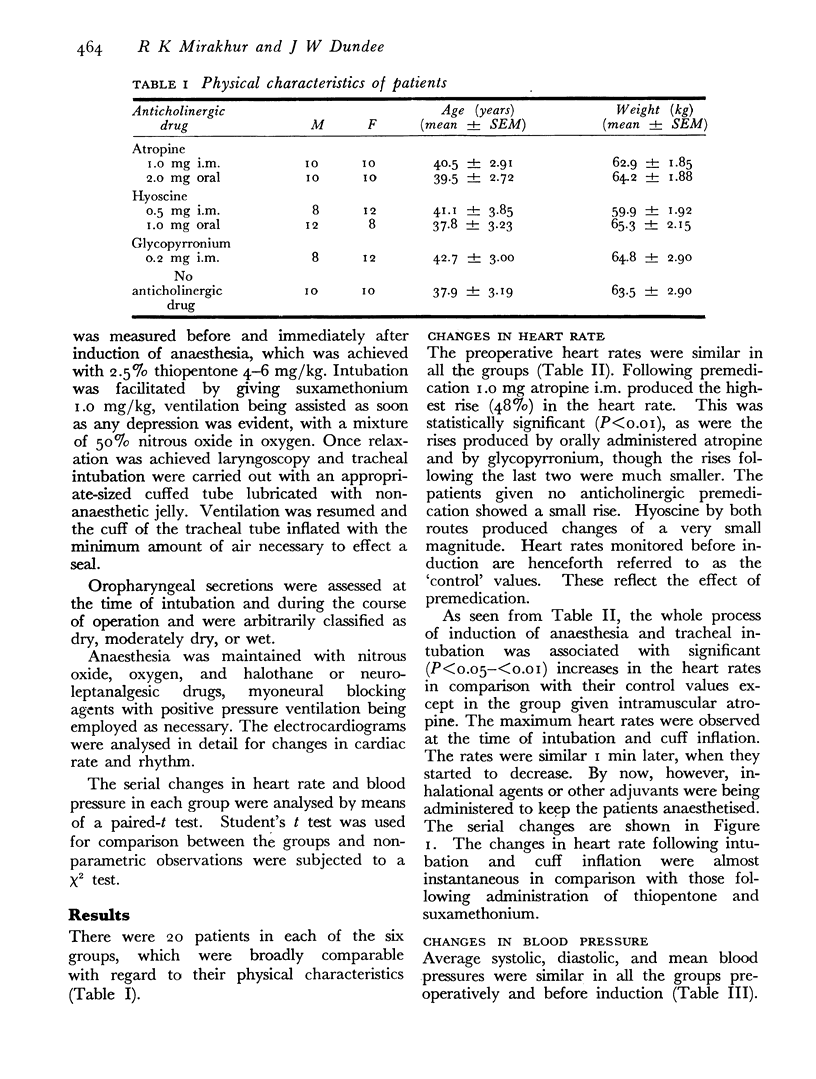
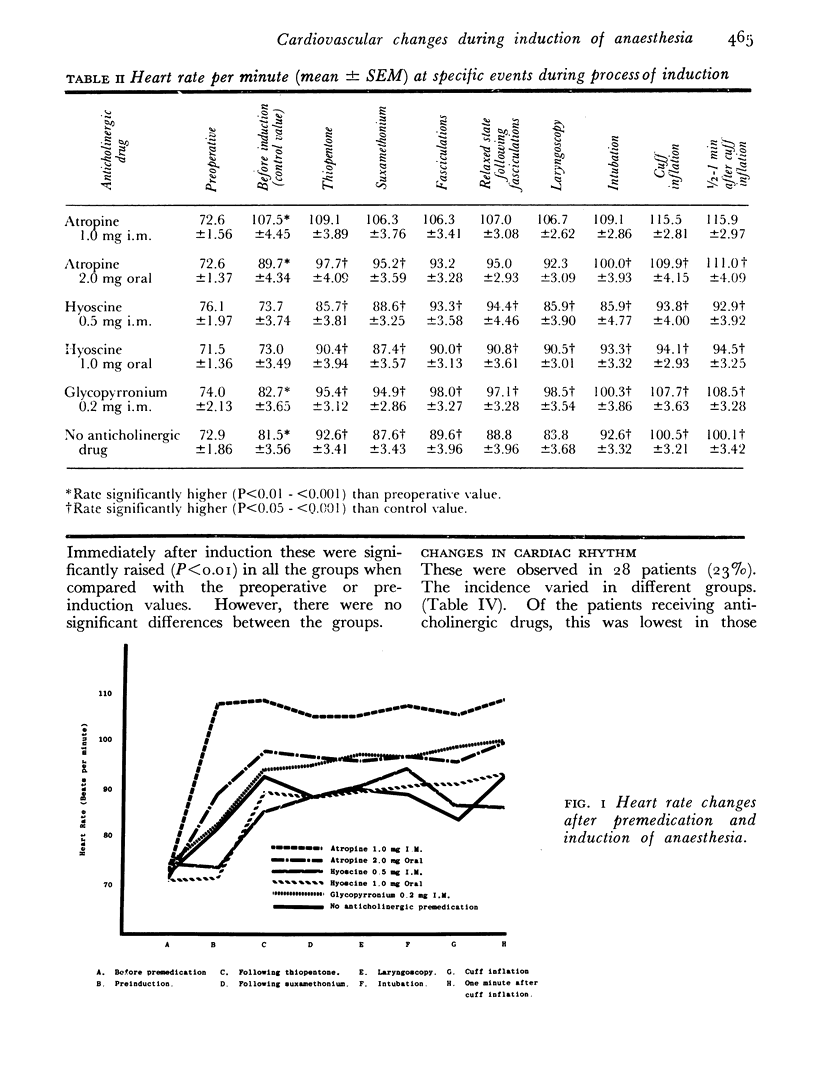
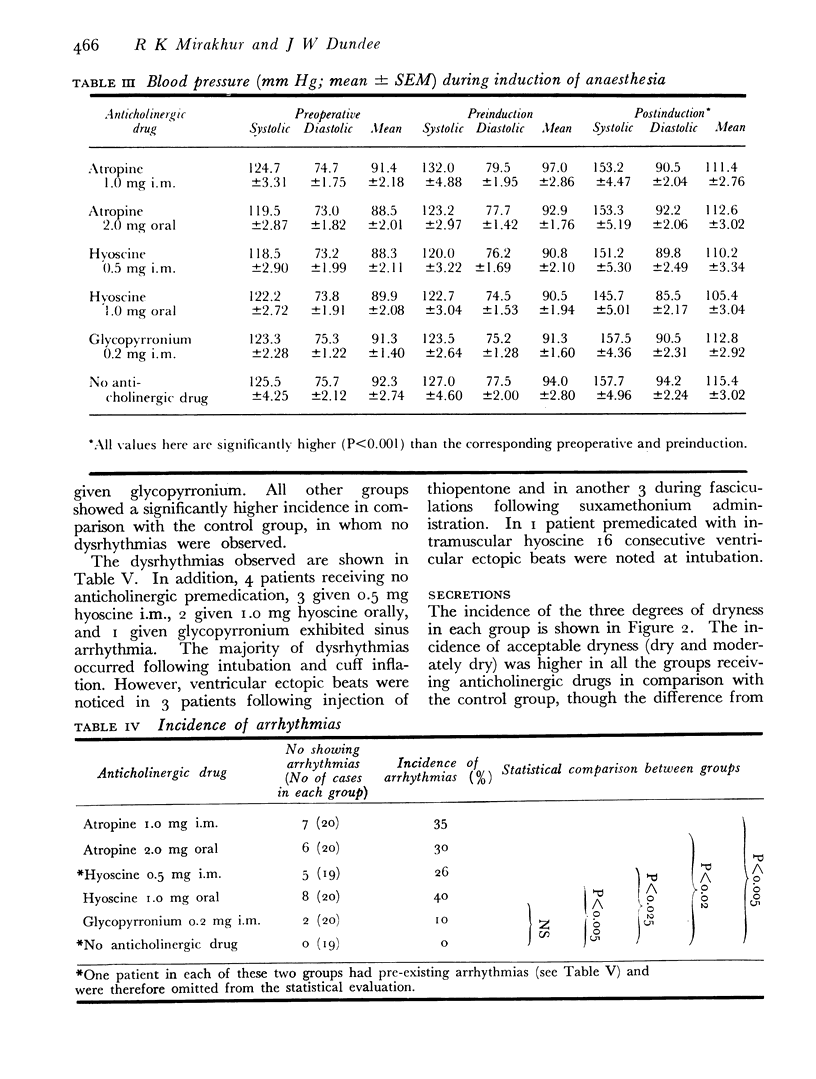
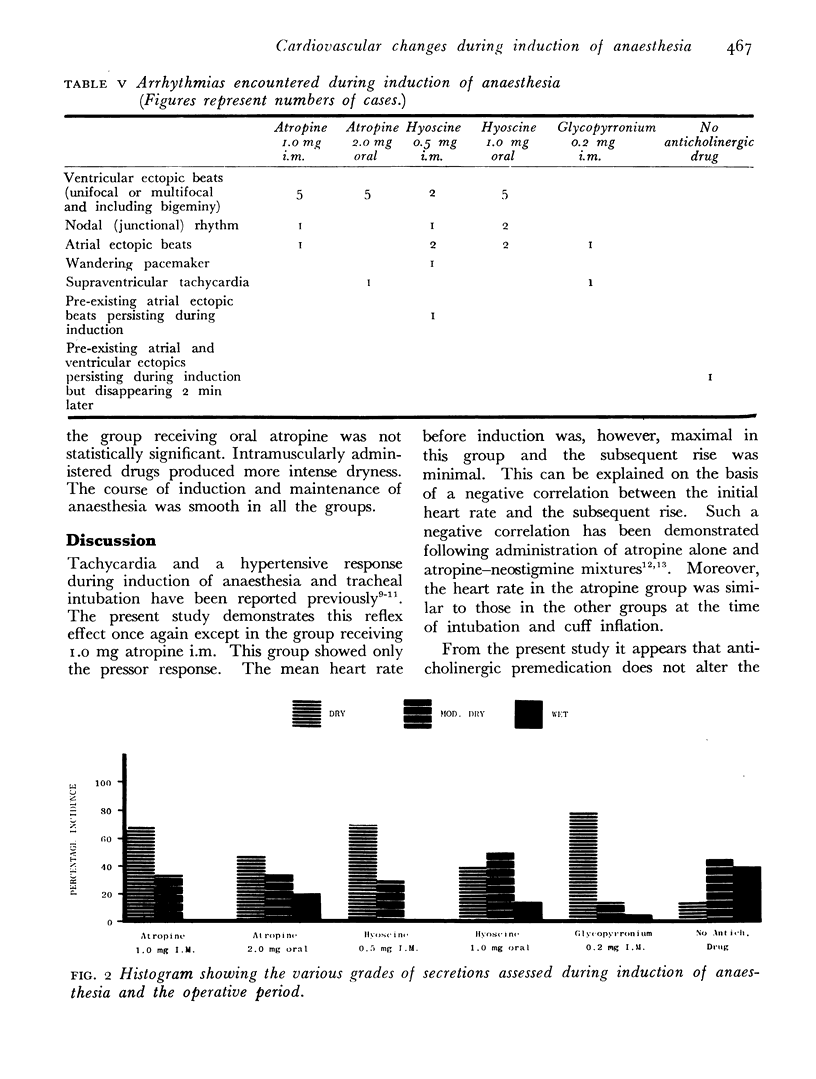
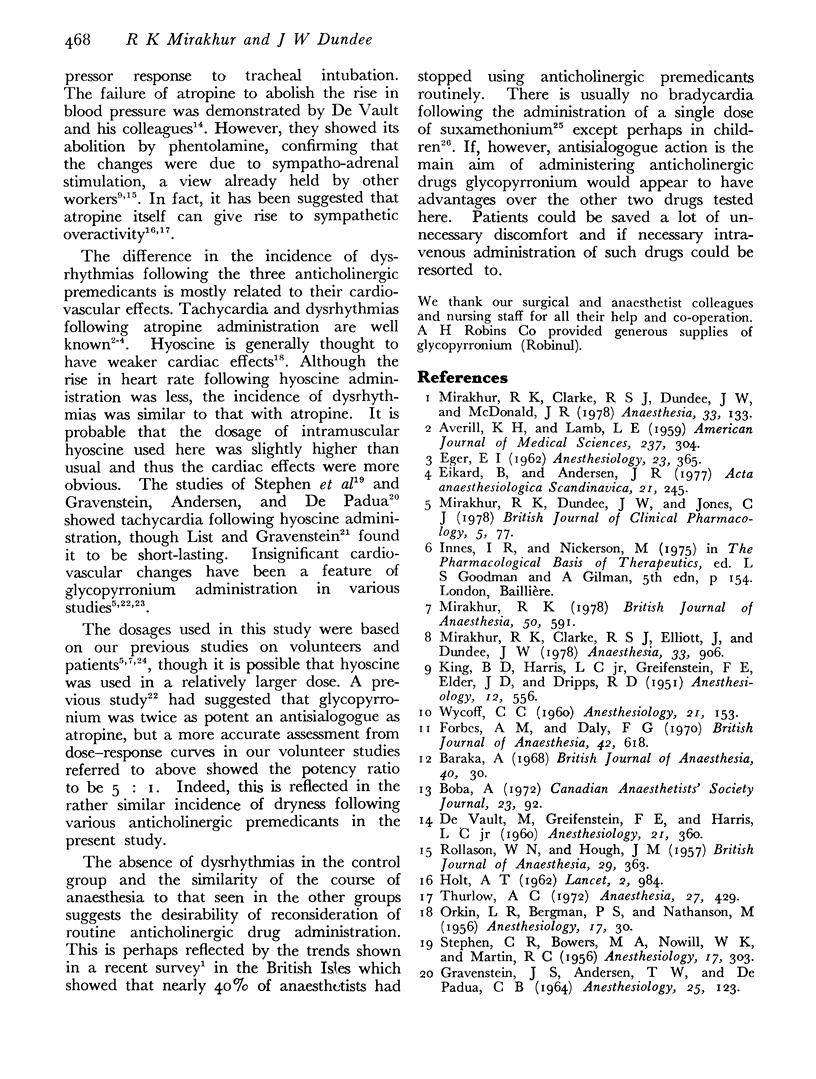
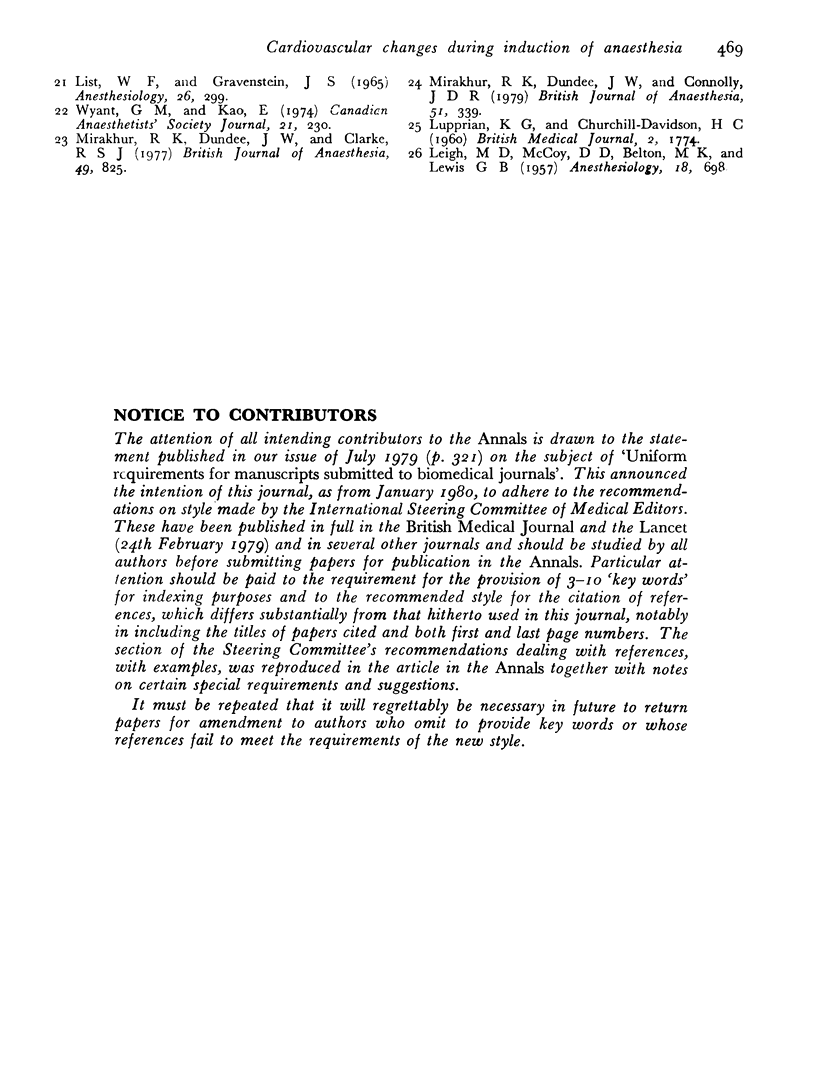
Selected References
These references are in PubMed. This may not be the complete list of references from this article.
- Baraka A. Safe reversal. 2. Atropine-neostigmine mixture: an electrocardiographic study. Br J Anaesth. 1968 Jan;40(1):30–36. doi: 10.1093/bja/40.1.30. [DOI] [PubMed] [Google Scholar]
- DEVAULT M., GREIFENSTEIN F. E., HARRIS L. C., Jr Circulatory responses to endotracheal intubation in light general anesthesia-the effect of atropine and phentolamine. Anesthesiology. 1960 Jul-Aug;21:360–362. doi: 10.1097/00000542-196007000-00004. [DOI] [PubMed] [Google Scholar]
- EGER E. I., 2nd Atropine, scopolamine, and related compounds. Anesthesiology. 1962 May-Jun;23:365–383. doi: 10.1097/00000542-196205000-00012. [DOI] [PubMed] [Google Scholar]
- GRAVENSTEIN J. S., ANDERSEN T. W., DEPADUA C. B. EFFECTS OF ATROPINE AND SCOPOLAMINE ON THE CARDIOVASCULAR SYSTEM IN MAN. Anesthesiology. 1964 Mar-Apr;25:123–130. doi: 10.1097/00000542-196403000-00003. [DOI] [PubMed] [Google Scholar]
- HOLT A. T. Premedication with atropine should not be routine. Lancet. 1962 Nov 10;2(7263):984–985. doi: 10.1016/s0140-6736(62)90742-0. [DOI] [PubMed] [Google Scholar]
- KING B. D., HARRIS L. C., Jr, GREIFENSTEIN F. E., ELDER J. D., Jr, DRIPPS R. D. Reflex circulatory responses to direct laryngoscopy and tracheal intubation performed during general anesthesia. Anesthesiology. 1951 Sep;12(5):556–566. doi: 10.1097/00000542-195109000-00002. [DOI] [PubMed] [Google Scholar]
- LEIGH M. D., McCOY D. D., BELTON M. K., LEWIS G. B., Jr Bradycardia following intravenous administration of succinylcholine chloride to infants and children. Anesthesiology. 1957 Sep-Oct;18(5):698–702. doi: 10.1097/00000542-195709000-00004. [DOI] [PubMed] [Google Scholar]
- LIST W. F., GRAVENSTEIN J. S. EFFECTS OF ATROPINE AND SCOPOLAMINE ON THE CARDIOVASCULAR SYSTEM IN MAN. 2. SECONDARY BRADYCARDIA AFTER SCOPOLAMINE. Anesthesiology. 1965 May-Jun;26:299–304. doi: 10.1097/00000542-196505000-00005. [DOI] [PubMed] [Google Scholar]
- LUPPRIAN K. G., CHURCHILL-DAVIDSON H. C. Effect of suxamethonium on cardiac rhythm. Br Med J. 1960 Dec 17;2(5215):1774–1777. doi: 10.1136/bmj.2.5215.1774. [DOI] [PMC free article] [PubMed] [Google Scholar]
- Mirakhur R. K., Clarke R. S., Dundee J. W., McDonald J. R. Anticholinergic drugs in anaesthesia. A survey of their present position. Anaesthesia. 1978 Feb;33(2):133–138. doi: 10.1111/j.1365-2044.1978.tb08340.x. [DOI] [PubMed] [Google Scholar]
- Mirakhur R. K., Clarke R. S., Elliott J., Dundee J. W. Atropine and glycopyrronium premedication. A comparison of the effects on cardiac rate and rhythm during induction of anaesthesia. Anaesthesia. 1978 Nov-Dec;33(10):906–912. [PubMed] [Google Scholar]
- Mirakhur R. K. Comparative study of the effects of oral and i.m. atropine and hyoscine in volunteers. Br J Anaesth. 1978 Jun;50(6):591–598. doi: 10.1093/bja/50.6.591. [DOI] [PubMed] [Google Scholar]
- Mirakhur R. K., Dundee J. W., Clarke R. S. Glycopyrrolate-neostigmine mixture for antagonism of neuromuscular block: comparison with atropine-neostigmine mixture. Br J Anaesth. 1977 Aug;49(8):825–829. doi: 10.1093/bja/49.8.825. [DOI] [PubMed] [Google Scholar]
- Mirakhur R. K., Dundee J. W., Connolly J. D. Studies of drugs given before anaesthesia. XVII: anticholinergic premedicants. Br J Anaesth. 1979 Apr;51(4):339–345. doi: 10.1093/bja/51.4.339. [DOI] [PubMed] [Google Scholar]
- ORKIN L. R., BERGMAN P. S., NATHANSON M. Effect of atropine, scopolamine and meperidine on man. Anesthesiology. 1956 Jan;17(1):30–37. doi: 10.1097/00000542-195601000-00005. [DOI] [PubMed] [Google Scholar]
- STEPHEN C. R., BOWERS M. A., NOWILL W. K., MARTIN R. C. Anticholinergic drugs in preanesthetic medication. Anesthesiology. 1956 Mar;17(2):303–313. doi: 10.1097/00000542-195603000-00010. [DOI] [PubMed] [Google Scholar]
- Thurlow A. C. Cardiac dysrhythmias in outpatient dental anaesthesia in children. The effect of prophylactic intravenous atropine. Anaesthesia. 1972 Oct;27(4):429–435. doi: 10.1111/j.1365-2044.1972.tb08249.x. [DOI] [PubMed] [Google Scholar]
- WYCOFF C. C. Endotracheal intubation: effects on blood pressure and pulse rate. Anesthesiology. 1960 Mar-Apr;21:153–158. [PubMed] [Google Scholar]


